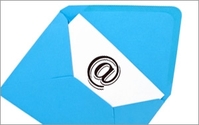 It came up during a dinner conversation the other night. What convinces one consumer to open an email and click through to a landing page or conduct a search doesn't always do the same
for another. Success typically is determined by the message in the subject line. Experian Marketing Services and Retention Science suggest that the technique differs dramatically depending on whether
the email comes from a news organization or an ecommerce site. One thing is certain -- between six and 10 words perform best, generating a 21% open rate, per one study.
It came up during a dinner conversation the other night. What convinces one consumer to open an email and click through to a landing page or conduct a search doesn't always do the same
for another. Success typically is determined by the message in the subject line. Experian Marketing Services and Retention Science suggest that the technique differs dramatically depending on whether
the email comes from a news organization or an ecommerce site. One thing is certain -- between six and 10 words perform best, generating a 21% open rate, per one study.
Retention Science
analyzed more than 260 million delivered emails across 540 email marketing campaigns for this study and found that subject lines containing five or fewer words ranked second, with a 16% open rate, and
those with 11 to 15 words return a minimal 14% open rate. However, 52% of emails sent had subject lines between 11 and 15 words.
advertisement
advertisement
"The most common subject line urges the person to open the
email because they'll find information about a sale or a coupon will soon expire," said Retention Science CEO Jerry Jao. "The worst subject line misleads the person into thinking the topic relates to
the email content. Eventually, when the audience discovers there's no connection, they get annoyed and you'll never get them back."
Some 35% of emails are opened on mobile devices, and many
include links that require the recipient to open them through a mobile app. Most smartphones only display five or six words in the subject line, so being concise becomes more critical.
Taking
a personalized approach also improves engagement, reengagement and retention rates. Of the email campaigns studied, those with the recipient's first name in the subject line increased open rates by
2.6% compared with those without a name. The study shows email an open rate of 18.3% when the recipient's first name appears in the subject line, compared with 15.7 without.
"Email drives
traffic to the items merchants push, because it's typically something the consumer didn't know about prior," Jao said, referring to discounts and coupons.
The findings in Experian's Q4 2013
study on open and click-through rates for email containing coupons suggest that these emails generate much higher revenue. In fact, the emails generate 48% higher revenue per email and 48% higher than
other promotional emails. Overall for the quarter, email volume rose 11.2%, compared with the year-ago quarter.
Experian's study indicates that coupons redeemable in stores were the most
frequent type of redemption offered. Some 80% of the coupons were redeemable in stores; while 70 were redeemable online. Twenty-one percent of in-store coupons emailed encouraged customers to show the
coupon in the store on their mobile device.
Some coupons have become more difficult to redeem. A recent Groupon campaign for Starbucks required the consumer to buy the coupon and then type a
valid code into a landing page that served up a barcode the merchant could scan in the physical store.
Some 58% of the clicks for mailings with in-store only coupons came from the coupon link,
compared with 48% from online only, and 46% from in-store or online.
Riding into the holidays, Cyber Monday has the highest transaction rate and revenue per email in Q4. Sunday was the
strongest weekend day. About 47% of emails were sent between midnight to 4 A.M. and 8 A.M. to midnight, these time slots garnered 33% of the transactions.
And while open rates in Q4 2014
pretty much matched those in the year-ago quarter, click rates were lower. Some 57% of brands had a significant decrease in click rates compared with Q4 2012 -- at 3.3% vs. 2.9%, respectively.
"Blue Envelope with Email Symbol" photo from Shutterstock.